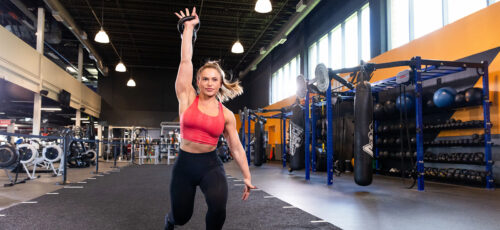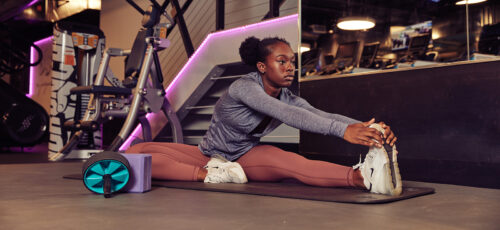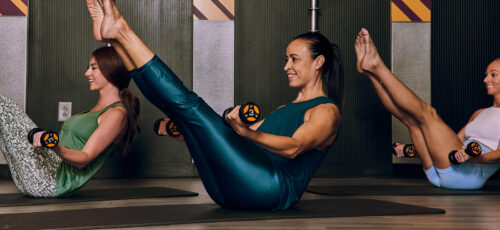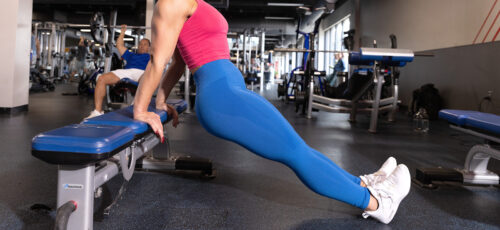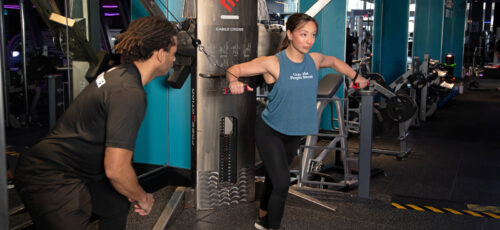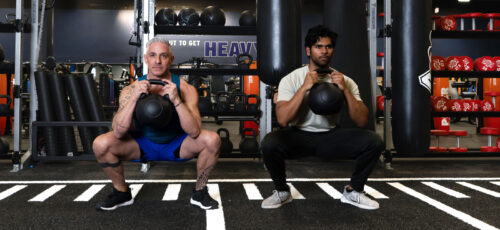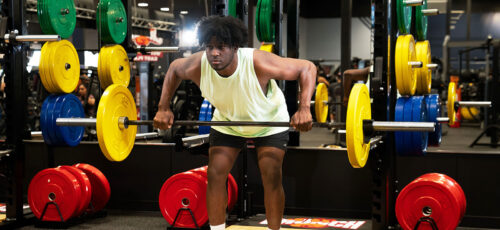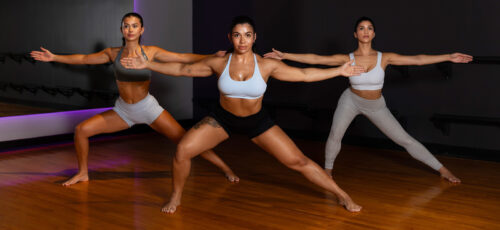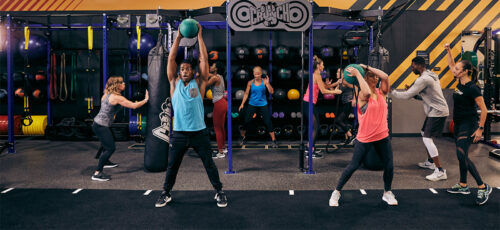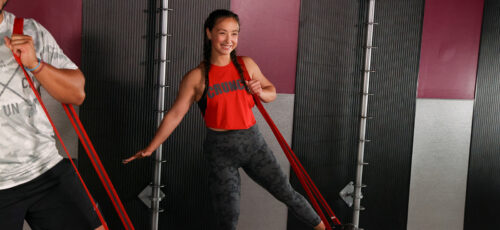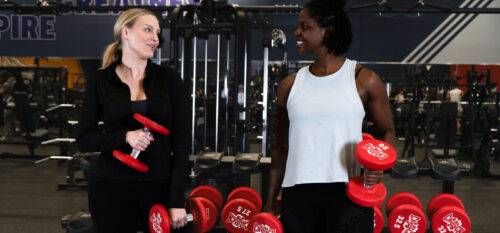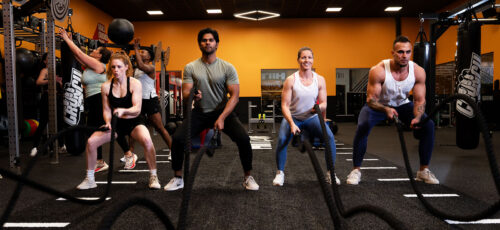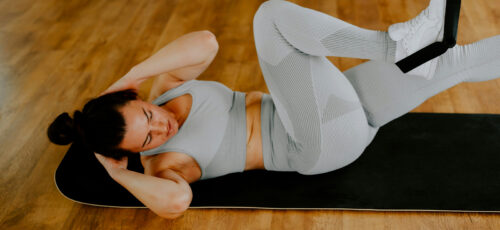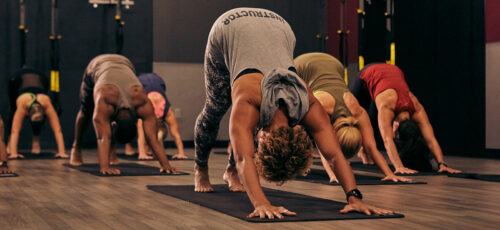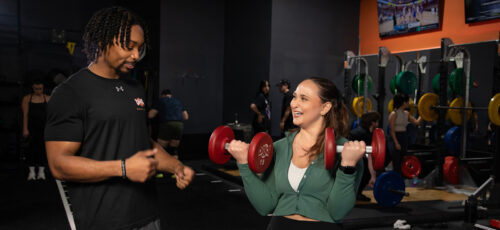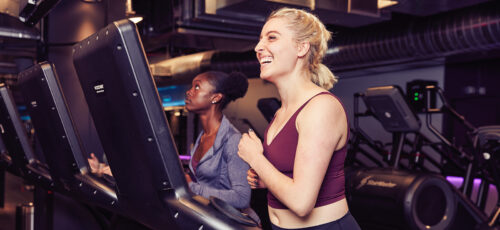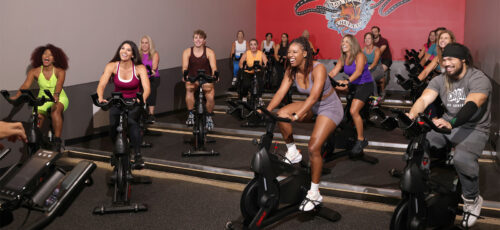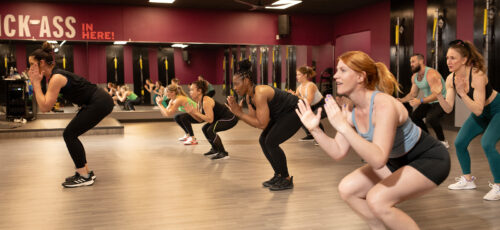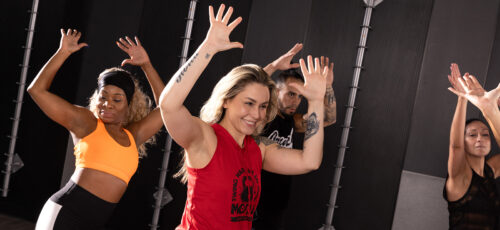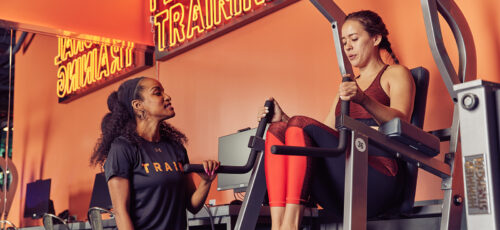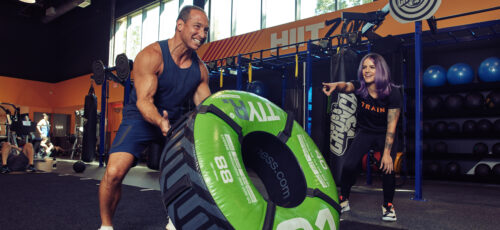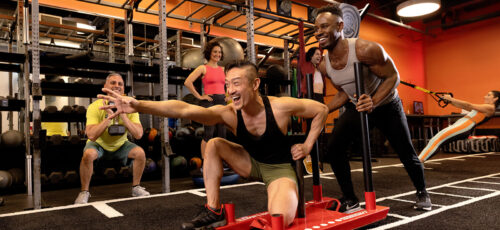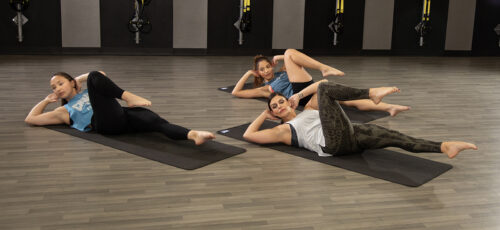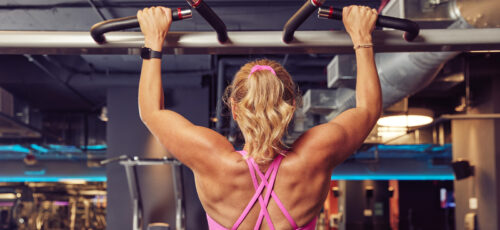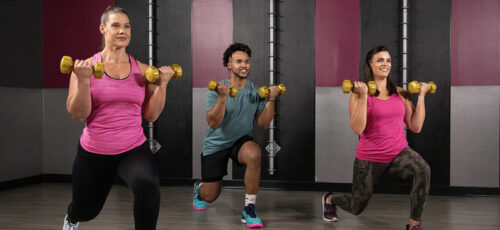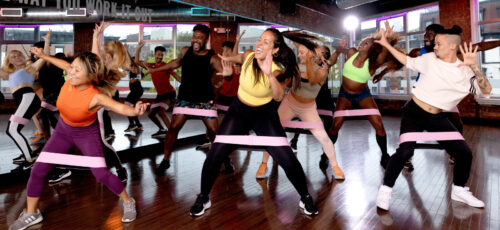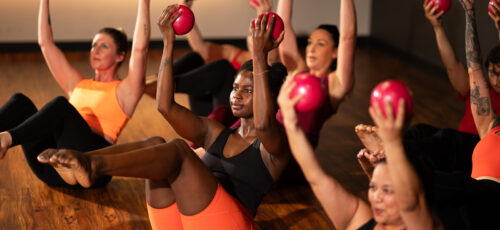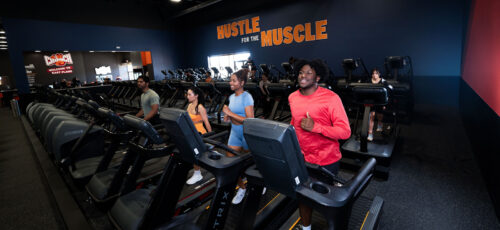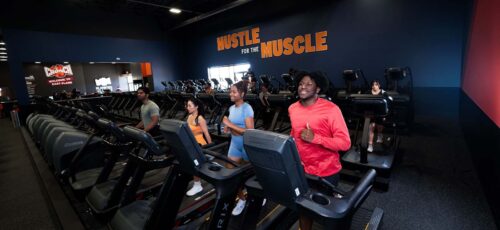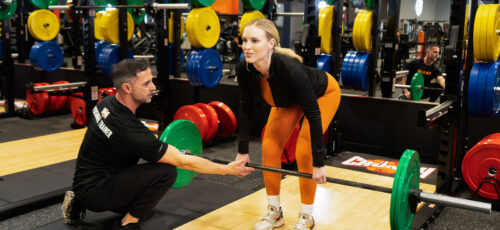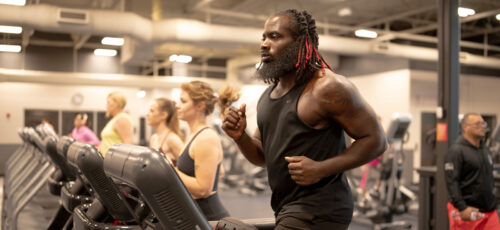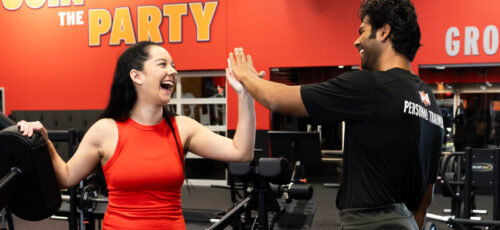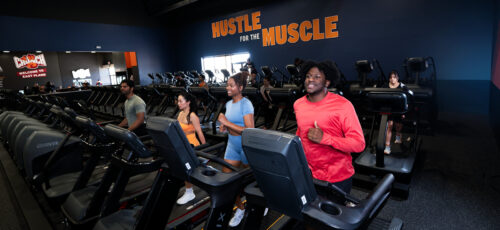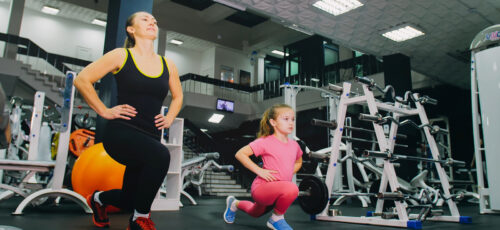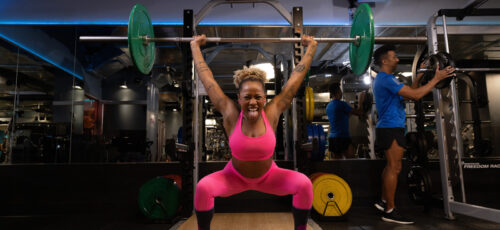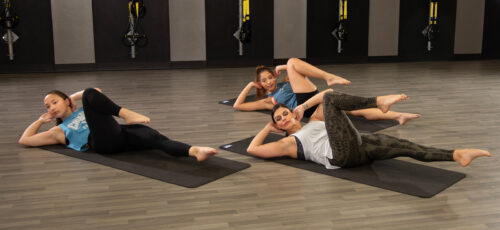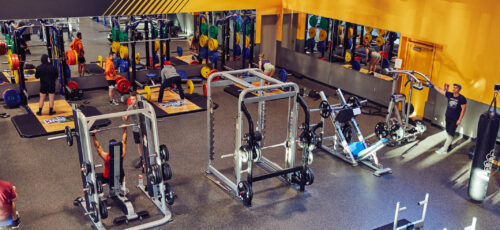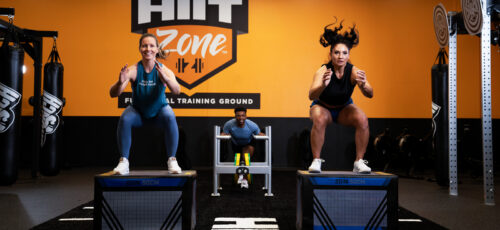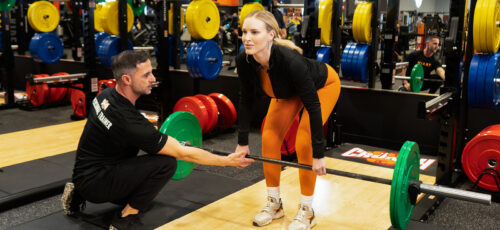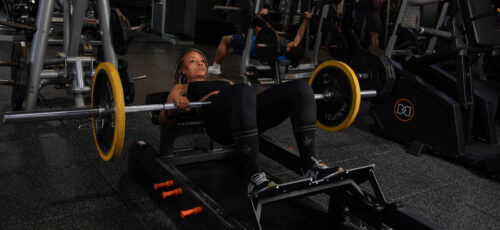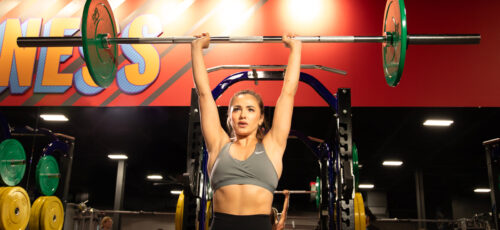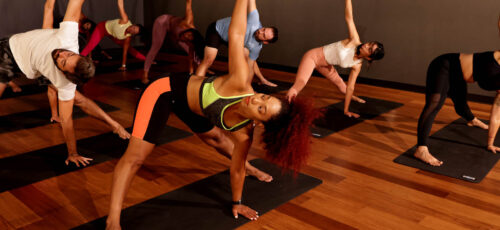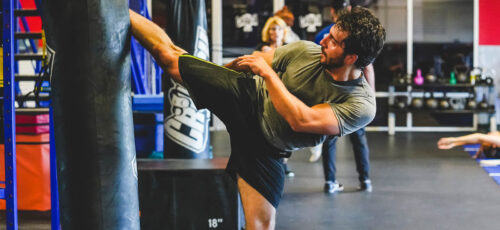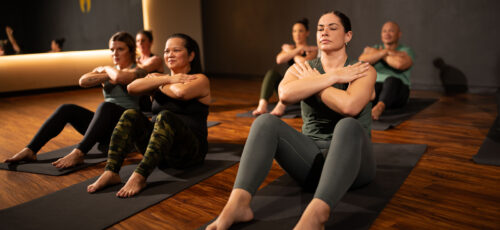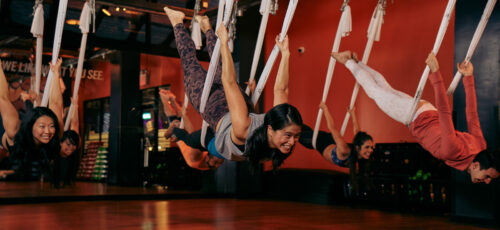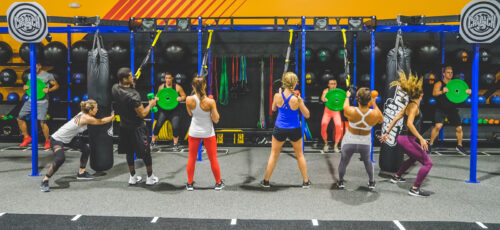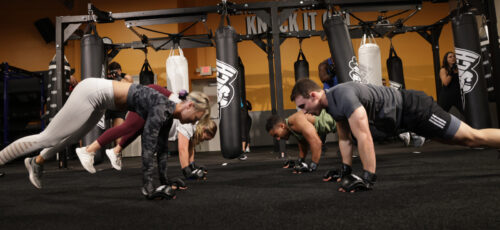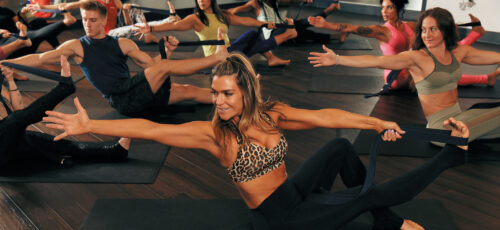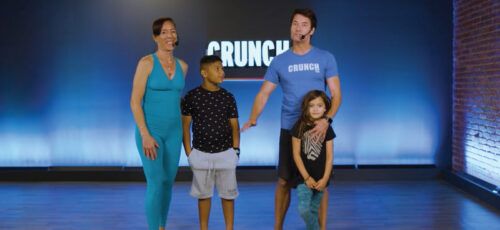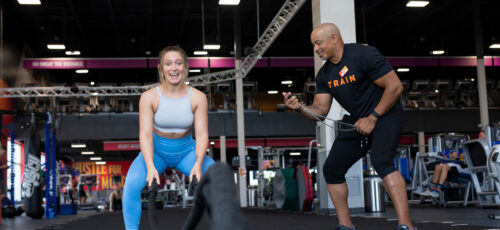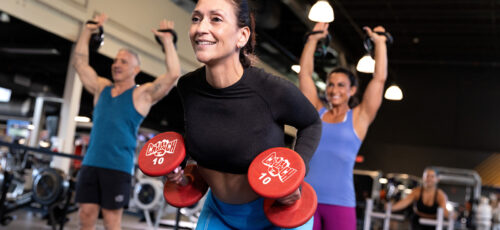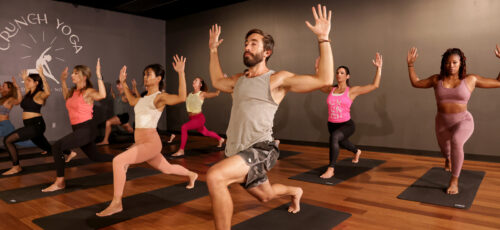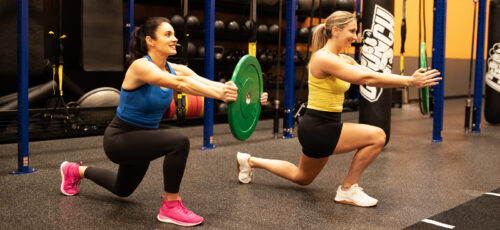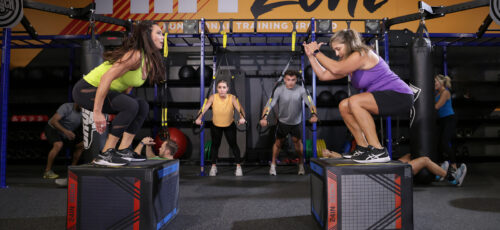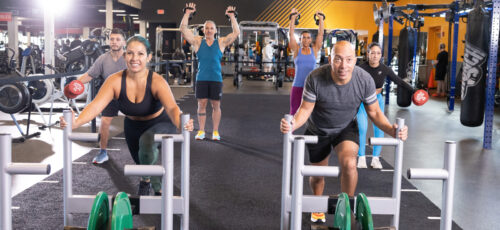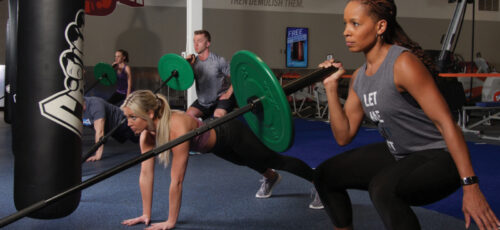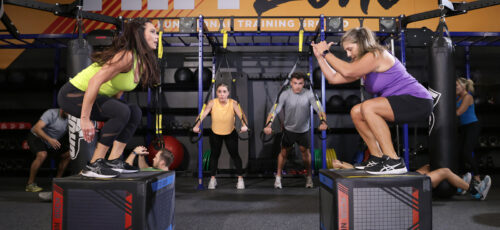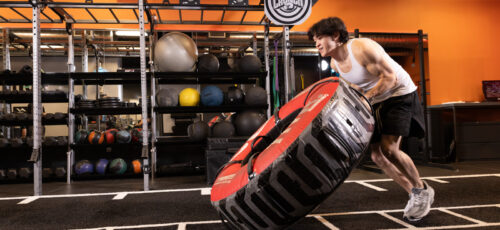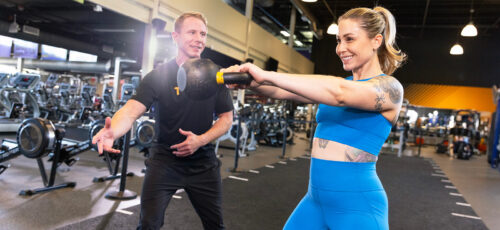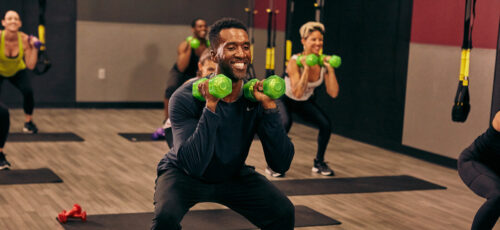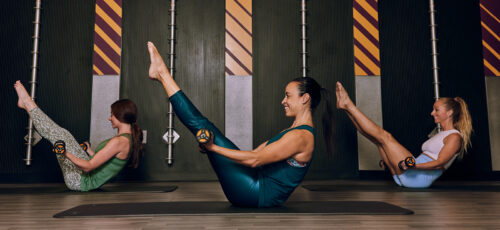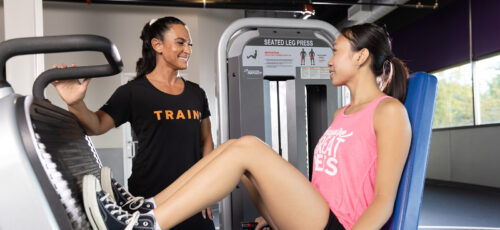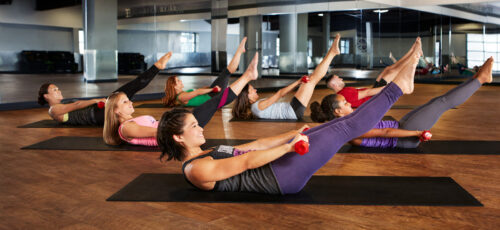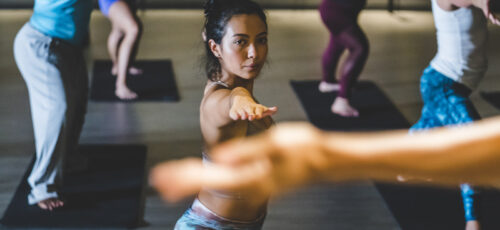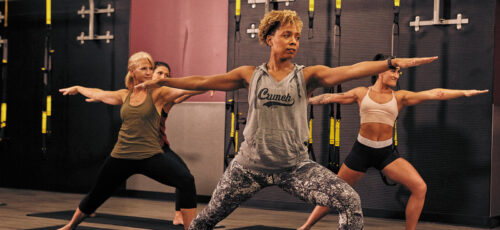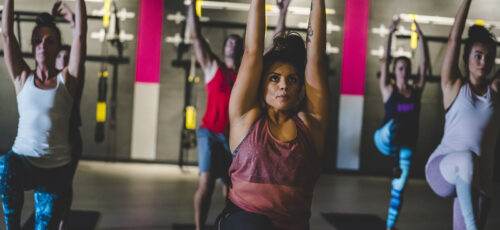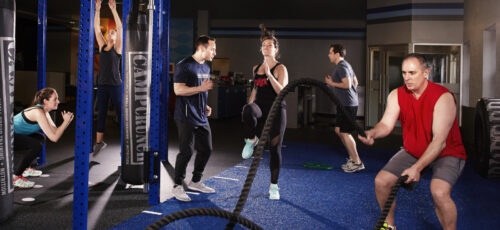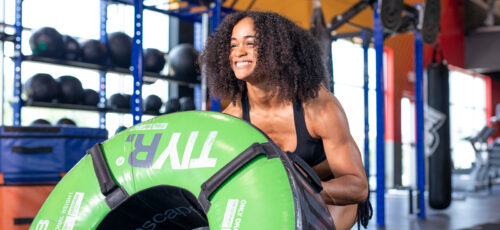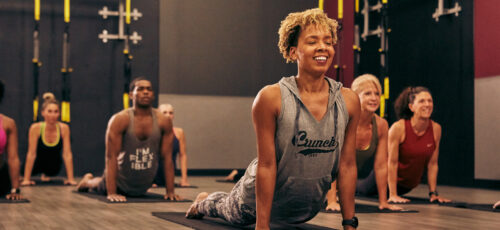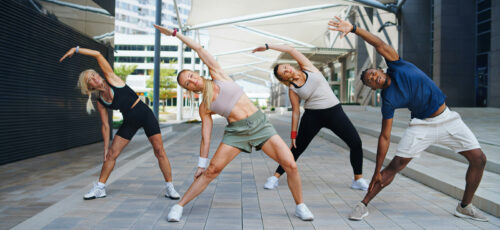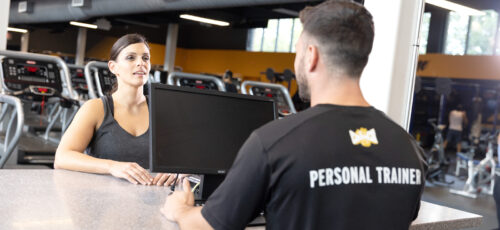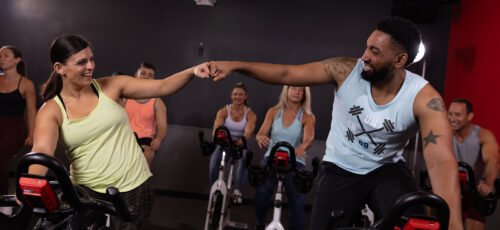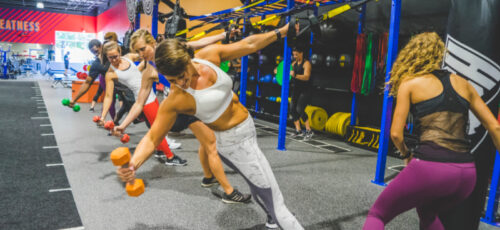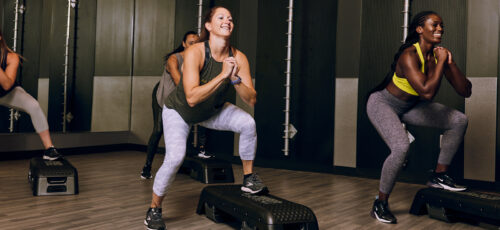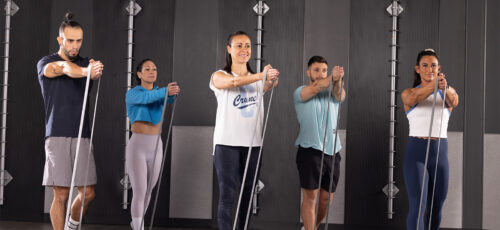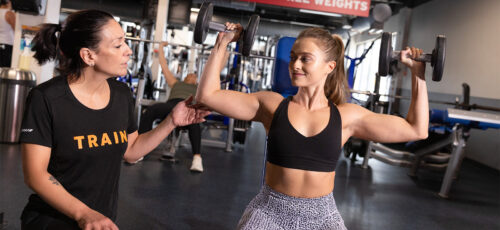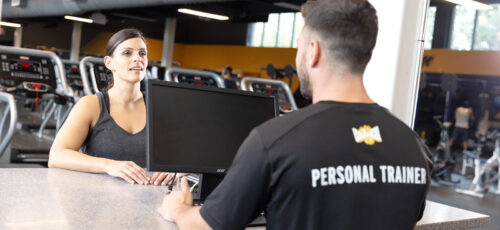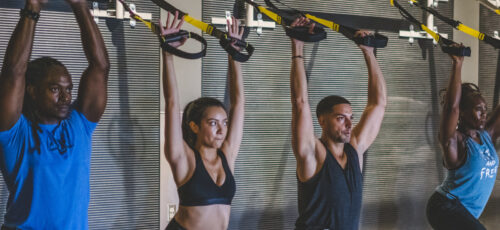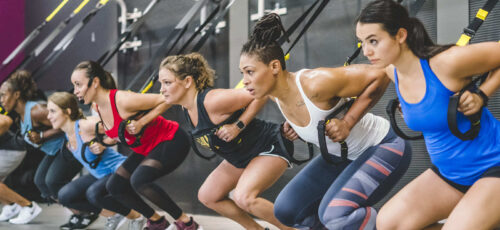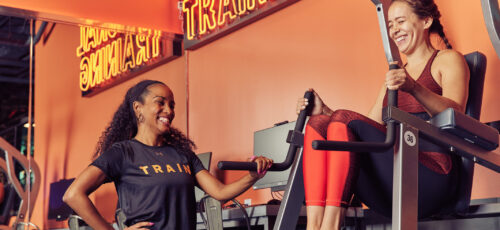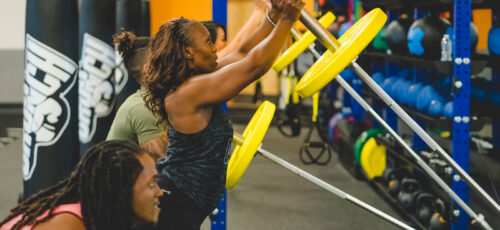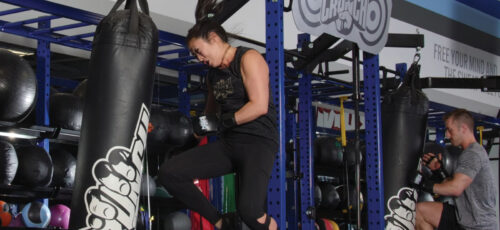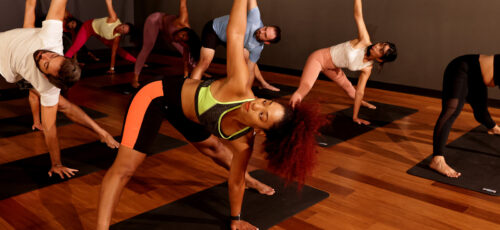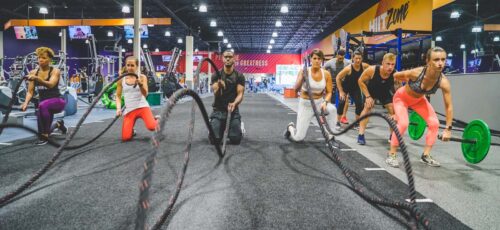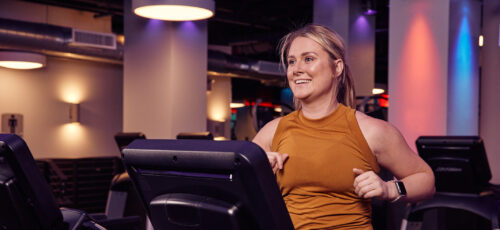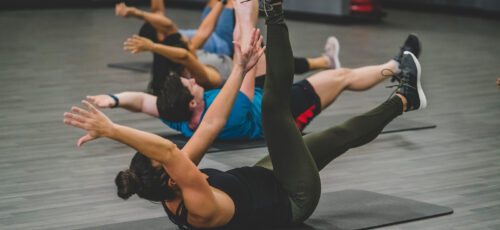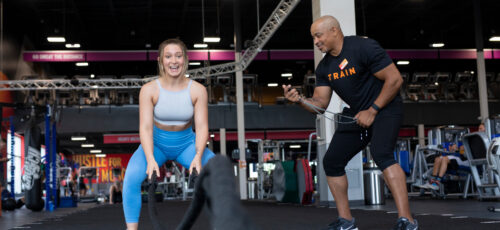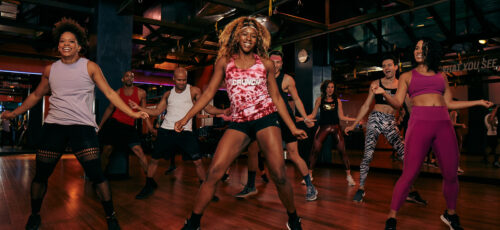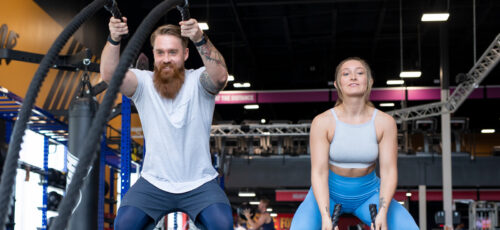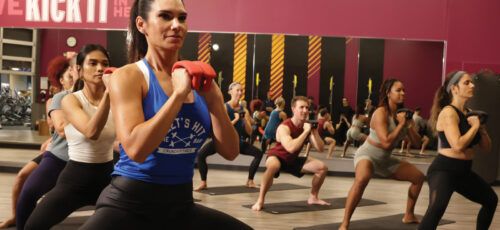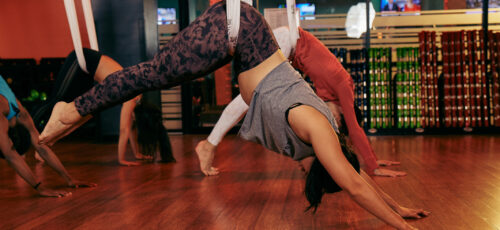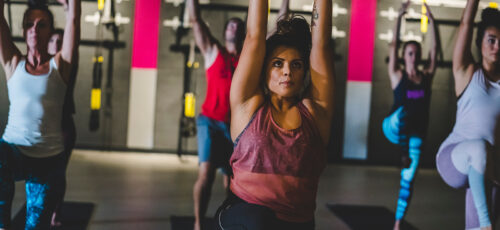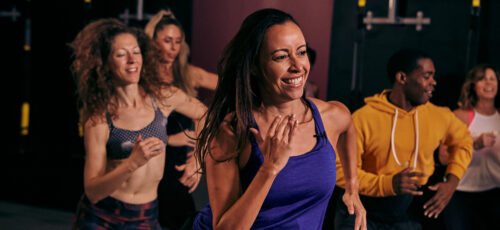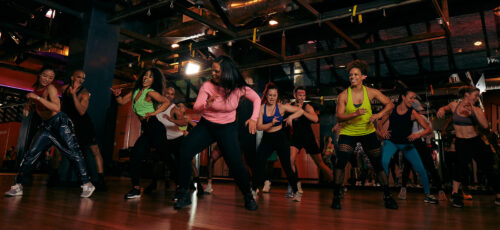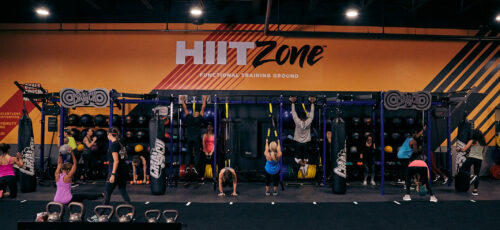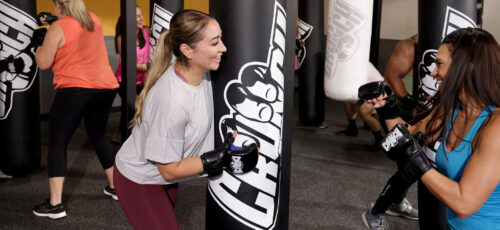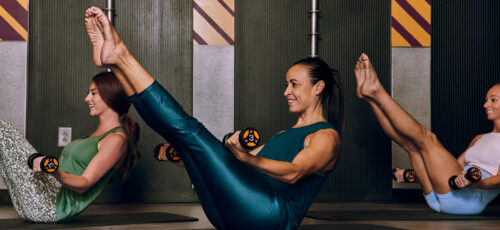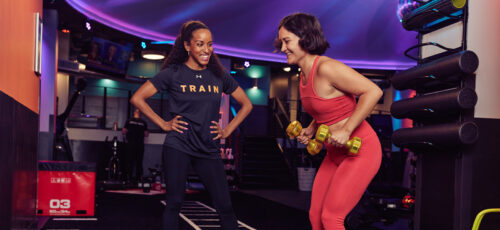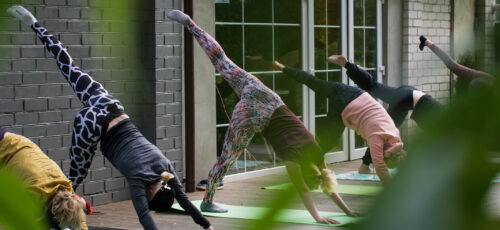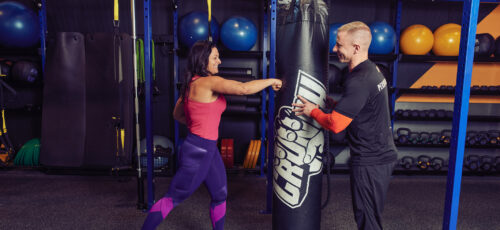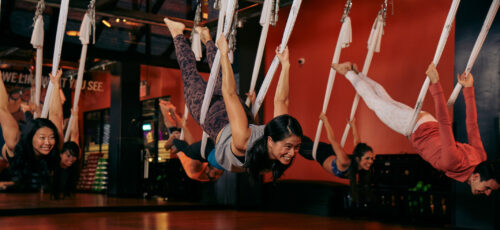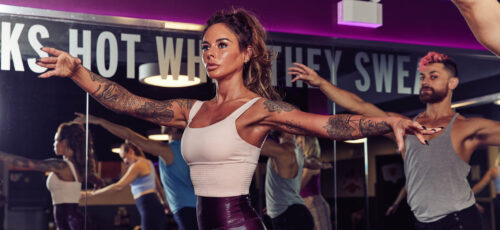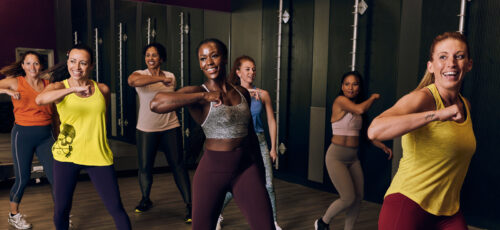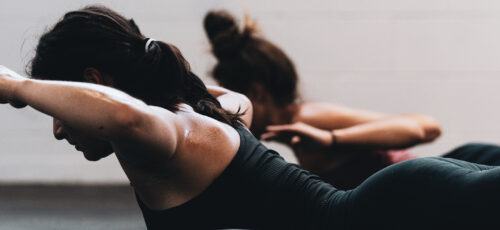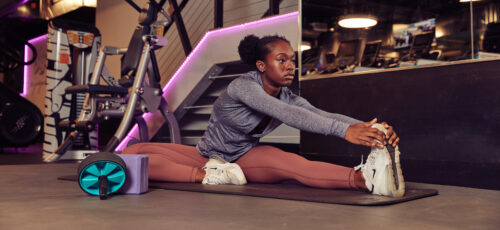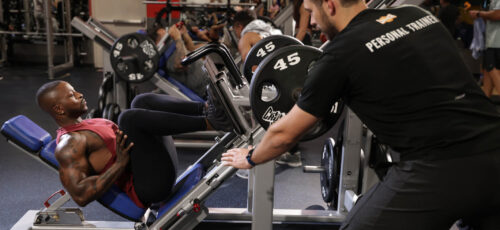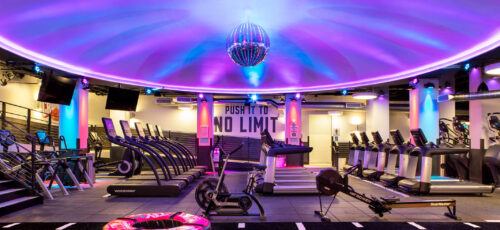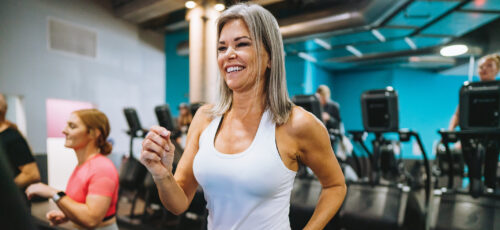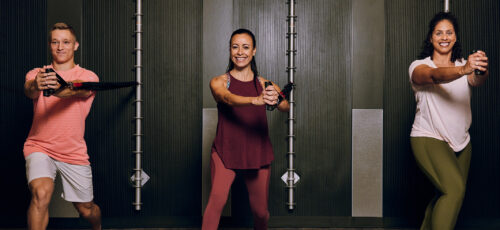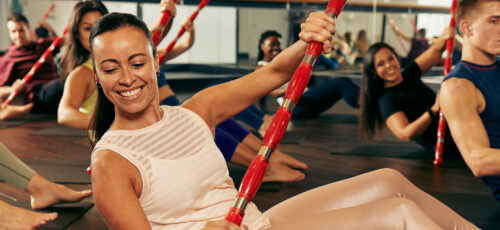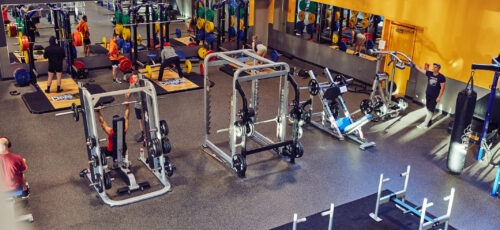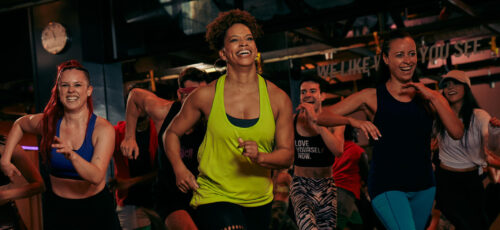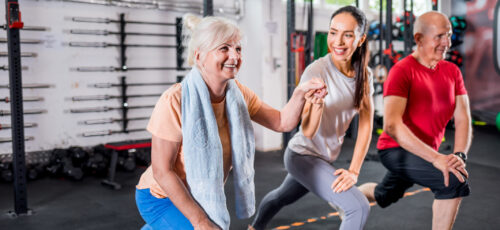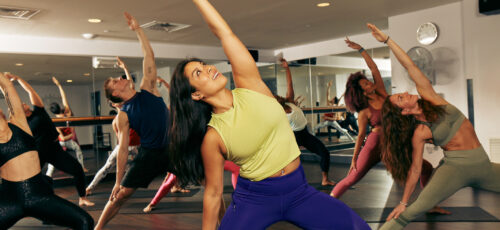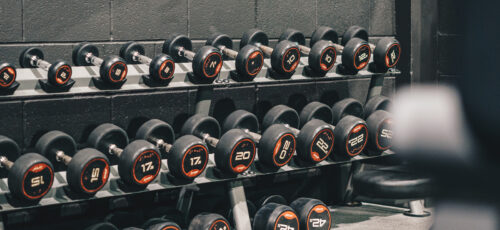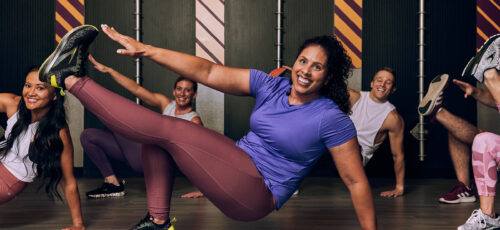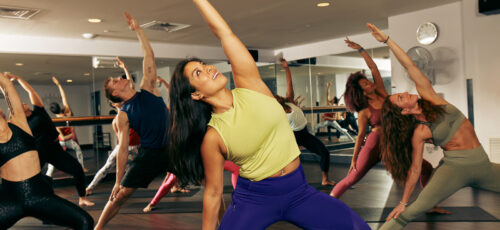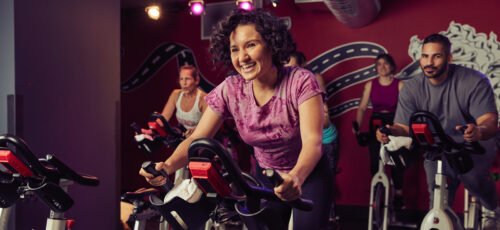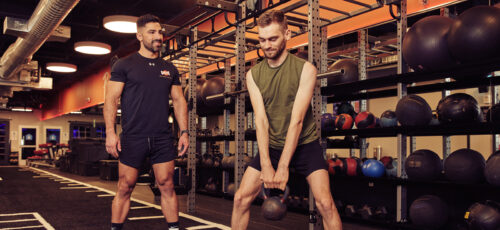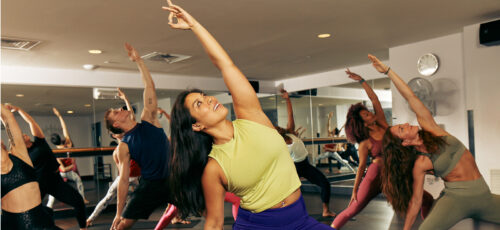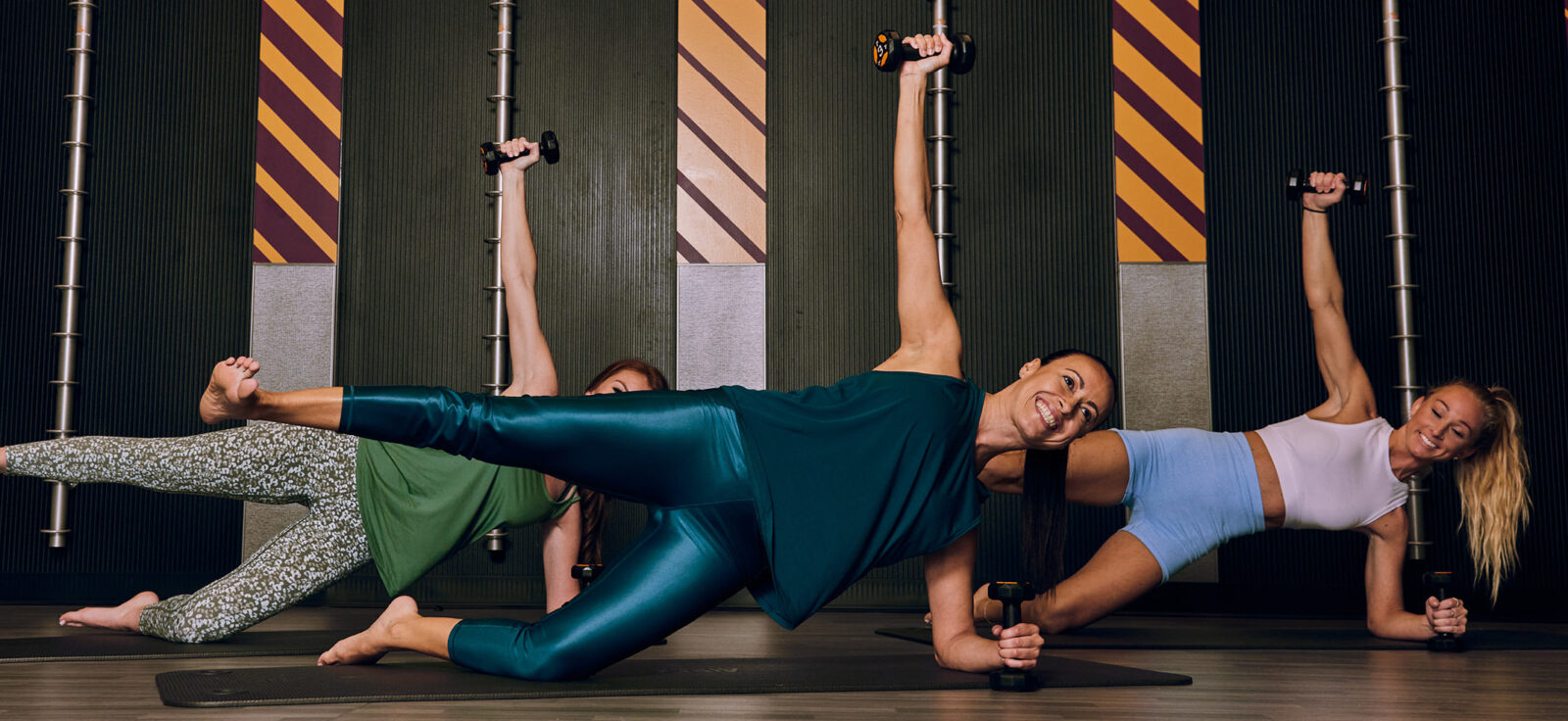
Did you know that the idea of group fitness has existed for ages, from ancient Persia to the gyms run by French strongmen in the 1800s?
While big-box gyms today differ from past ones, the core idea remains that working out is more fun and motivating when you’re not doing it alone.
Nowadays, group exercise is one of the cornerstones of the fitness industry and accounts for billions in annual revenue. In surveys and online reviews, whether or not a gym offers high-quality group classes is a leading factor in which membership customers ultimately choose.
But what are group fitness classes, and do they deserve all the pomp and circumstance?
In this article, we’ll discuss the facts surrounding group fitness classes, their benefits, and how to find the best classes near you.
How Do Group Fitness Classes Work?
In most group exercise classes, you’ll be guided by passionate and highly-trained instructors. In larger classes, a team of instructors may be there to make sure everyone gets the attention they need.
Throughout each session, these instructors will lead you through workouts and movements to boost your cardiovascular health, strength, and endurance while creating a fun and inviting atmosphere for everyone.
This combination of fun and function offers many benefits, including things such as:
Guidance
Achieving fitness goals while minimizing the risk of injury depends heavily on using the correct exercise form. Rather than attempting to learn new movements or exercises without assistance, joining a group fitness class offers valuable guidance from a trained instructor.
These classes can help you understand the difference between each movement, ensuring that you execute every part of your workout routine correctly and safely.
Instructors provide detailed demonstrations and real-time feedback in a group fitness setting, correcting your posture, alignment, and technique. This hands-on guidance can help you avoid common mistakes that often lead to injuries, such as improper lifting techniques or poor joint alignment.
Additionally, group classes often build a supportive environment where you can learn alongside others, further enhancing your motivation and commitment to your fitness journey.

Examples of How Proper Guidance Can Improve Fitness:
Weight Lifting and Resistance Training: Improper form when lifting weights can lead to serious injuries, such as lower back strain, shoulder impingement, or knee damage. A fitness instructor can teach you how to properly engage your core, align your spine, and position your joints to perform squats, deadlifts, or bench presses safely.
Yoga and Pilates: These exercises require precise movements and controlled breathing techniques. Misalignment in poses or over-stretching can cause injuries. A trained instructor can help you understand the proper alignment and modifications needed for your body’s capabilities, allowing you to gain the full benefits of flexibility and balance training.
High-Intensity Interval Training (HIIT): HIIT workouts involve a mix of dynamic movements that can be intense and challenging. Performing these exercises with improper form, such as not fully extending during a jump or not landing softly, can increase the risk of sprains and strains. Group instructors provide cues and modifications to maintain proper form, helping you perform at your best while staying safe.
A 2024 study shows that participants who received professional guidance showed a significantly lower incidence of injuries than those who exercised without supervision. The study highlights the importance of proper coaching in reducing the risk of musculoskeletal injuries.
Motivation
Finding motivation and commitment to a workout routine can be difficult, especially when exercising alone. Many people need help to stay motivated, often finding excuses to skip workouts or feeling uninspired without external accountability.
However, joining a group fitness class setting can greatly enhance your ability to find motivation by immersing you in a high-energy environment with enthusiastic instructors and supportive class members.
The companionship and structure of a group setting, combined with the guidance of a knowledgeable coach, help create a positive atmosphere that makes it easier and more enjoyable to stay committed to your fitness goals.
In a group class, the collective energy and dynamic atmosphere provided by fellow class members can inspire you to push harder and stay more engaged than if you were working out alone.
Additionally, the presence of others can naturally introduce an element of friendly competition, where observing the efforts of others encourages you to elevate your own performance and strive for new fitness levels.
The social aspect of a group fitness class fosters a sense of belonging. It motivates you to stay on track, making the fitness journey feel more rewarding and less solitary.
How Group Exercise Classes Enhance Motivation
Accountability Through Scheduled Classes: Knowing that a class starts at a specific time and that people expect you to attend can provide a strong incentive to show up, even when motivation is low. This level of accountability is often needed when working out alone.
Support from Instructors and Peers: Fitness instructors in group classes offer more than exercise guidance; they often act as motivators, providing encouragement and praise throughout the session. Classmates can also become a source of support, cheering each other on and celebrating progress together.
Energy of the Group Setting: The collective energy of a group fitness class, with music, synchronized movements, and shared goals, can be contagious and help participants feel more enthusiastic about their workouts. This communal experience often leads to improved mood, reduced feelings of fatigue, and a greater willingness to push through challenging exercises.
Friendly Competition and Goal Setting: In a group environment, friendly competition can arise naturally. Competing with others — or even just trying to keep pace — can inspire you to push beyond your limits, set personal records, or try exercises you might otherwise avoid. This environment also fosters a culture of continuous improvement, where setting and achieving goals is celebrated.
A 2019 study found that people who participated in group fitness classes were 70% more likely to adhere to their exercise routines over the long term than those who exercised alone. The study concluded that social interaction and positive reinforcement in group settings played a key role in maintaining motivation.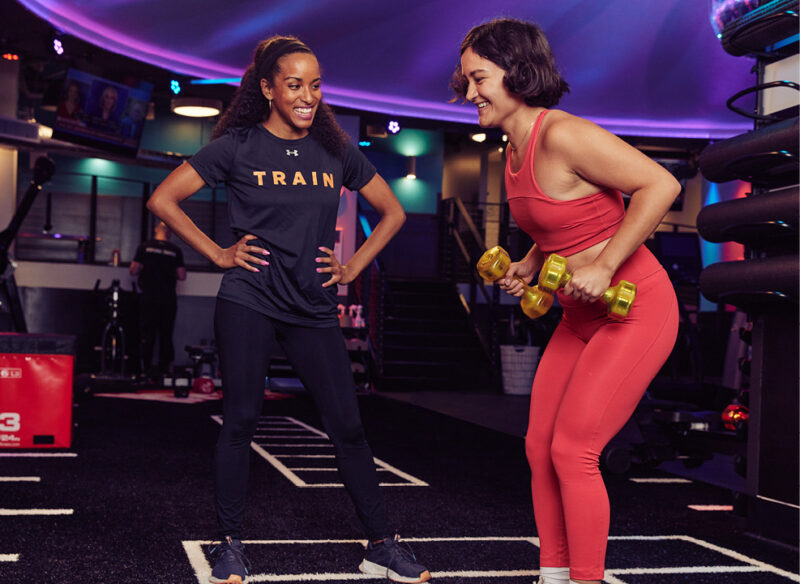
Confidence
Starting or maintaining a fitness routine can feel overwhelming, especially with unfamiliar workouts or exercises. Many people experience indecision or anxiety in the gym, worrying about performing exercises incorrectly or feeling self-conscious about their abilities.
However, joining a group class with members with similar experience levels and fitness goals can significantly alleviate these concerns. In a group environment, the shared journey and collective support help remove much of the pressure associated with trying new workouts, allowing you to focus on building confidence and developing your skills.
Participating in a fitness class provides a structured, supportive setting where you can experiment with different exercises without fear of judgment. Instructors provide guidance and modifications to suit various ability levels, ensuring each member can progress at their own pace.
Encouragement from instructors and peers fosters a sense of connection and reassurance, which can be a key in helping you feel more comfortable and confident in your abilities.
As you successfully complete each class, you gradually build the self-assurance needed to tackle more challenging workouts, both within the class setting and on your own.
Community
Throughout history, the community has played a vital role in fitness and exercise practices, fostering a sense of connection and shared purpose.
Many people may need to realize, however, that the benefits of group workouts go far beyond simply making exercise more enjoyable.
Research has shown that working out within a group setting offers numerous advantages for physical, mental, and emotional health that are not as easily achieved when exercising alone.
People who participate in group workouts often experience significantly better health outcomes. Studies have found that those who exercise as part of a community report an average 26% reduction in stress levels compared to those who exercise solo.
The social support and encouragement from group members help reduce anxiety and promote a sense of well-being. Additionally, the structure and motivation provided by group workouts contribute to more consistent exercise habits, leading to improved cardiovascular health, greater muscular strength, and enhanced overall fitness.
The benefits of participating in group workouts in a community setting include:
- Better Physical Health: Group workouts can lead to more consistent exercise routines, which are crucial for achieving physical health benefits like increased cardiovascular endurance, improved muscle tone, and better weight management.
- Improved Mental Health: Exercising in a group has been linked to lower levels of depression and anxiety. The social aspect of group workouts can elevate mood and enhance overall mental well-being by releasing endorphins and fostering a sense of camaraderie and connection.
- Emotional Resilience and Stress Reduction: Group exercise provides emotional support to help participants manage stress more effectively.
- Social Bonding and Community Building: Group workouts help create strong social bonds among participants, fostering a sense of community beyond the exercise session. This sense of belonging can contribute to overall happiness and life satisfaction, as people feel connected to others with similar health and fitness goals.
Group Fitness Class vs. Personal Training: Key Differences
Most people question whether group fitness classes or personal training would be best when debating whether to start working out with others. To help, we’ll break down the differences between each.
Level of Attention
When you work with a personal trainer, you’ll get individualized attention throughout the session. This means you can ask as many questions as you need to about specific exercises or understand the purpose behind each part of your workout routine.
The trainer can customize their guidance to suit your needs, making sure you get detailed feedback and personalized instruction. In contrast, group fitness classes provide less individualized attention as the instructor’s focus is divided among all participants.
However, a group setting provides the unique advantage of observing other class members. You can learn by watching their form, technique, or pace, which can help reinforce proper exercise habits.
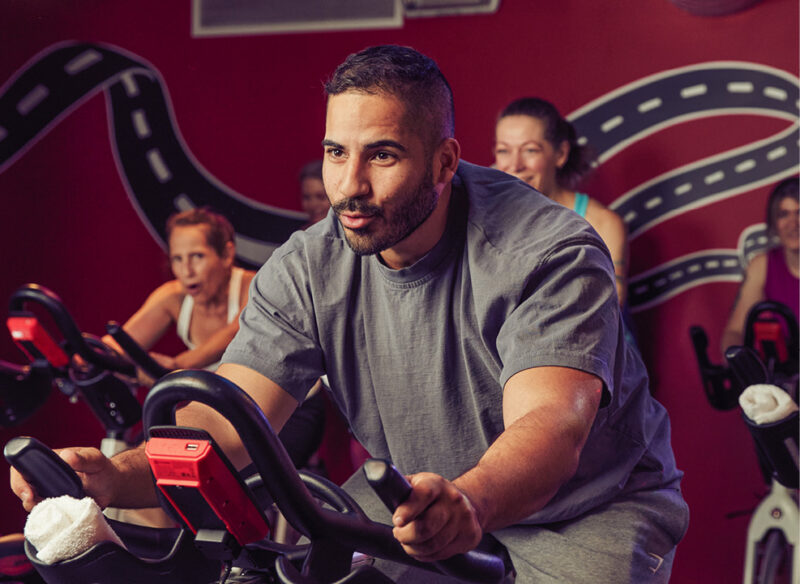
Customizability
When you work with a personal trainer, your experience is all about you. It starts with a chat about your fitness goals, the kinds of workouts you like, and how you would like to be coached. This way, everything about your training, from the exercises to the pace and intensity, is totally in your hands.
Regarding group classes, you have the freedom to personalize your experience by selecting from a wide variety of options. At gyms like Crunch, you’ll find diverse classes, so you can pick the ones that resonate with your interests and fitness goals. Enjoy exploring and finding the perfect fit for you!
Price
Since personal training involves dedicated, one-on-one time with an instructor, the cost is typically higher, ranging from $50.00 to $100.00 per standard session. The exact price can depend on the trainer’s experience, your location, and the specific gym you attend.
Group fitness classes, on the other hand, tend to have more variable pricing depending on the gym and membership plan. For example, specialized or “boutique” fitness classes often come with a premium price tag and can cost $50.00 or more per class.
However, for members of Crunch with Peak or Peak Results memberships, the cost of group classes is covered by their monthly membership fees, allowing them to attend a wide range of classes without paying extra per session.
What Kinds of Group Classes Does Crunch Offer?
The classes offered by each Crunch Fitness location vary depending on member preferences, the experience and qualifications of instructors, and any special deals or campaigns happening. Still, Crunch members can expect every location to include classes in the following categories:
Strength Training
While the term “strength training” often brings to mind images of squat racks, heavy weights, and traditional bodybuilding exercises, strength-based classes have evolved significantly from the days of strongmen and oversized dumbbells.
Modern strength training classes, such as Pilates or Barre, provide:
- A more accessible entry point for beginners.
- Focusing on building strength through controlled movements.
- Lighter weights.
- Bodyweight exercises.
These classes emphasize core stability, flexibility, and endurance, making them suitable for people of all fitness levels.
However, for those looking for a more traditional strength training experience, Crunch offers classes that guide participants through different exercises using different types of equipment.
In these sessions, instructors provide step-by-step coaching on using free weights, resistance bands, battle ropes, and other fitness tools. They help you learn proper technique and form while building strength and confidence in a supportive group setting.
HIIT
While high-intensity interval training (HIIT) offers many of the same benefits as other types of exercise—such as improving cardiovascular health, building strength, and reducing stress—its distinctive format sets it apart, warranting its own dedicated category.
HIIT classes are structured around fast-paced circuit training, which involves alternating between short bursts of intense exercise and brief recovery periods. Instructors guide participants through a series of dynamic, full-body workouts designed to push their limits and maximize effort in a short amount of time.
Although these sessions can be more demanding than other fitness classes, they provide a highly effective way for motivated individuals to challenge themselves and elevate their overall health and fitness to new heights.
Yoga
Yoga classes stand out for their ability to provide a harmonious blend of physical exertion and relaxation, catering to both the body and the mind.
At Crunch, Hatha Flow Yoga offers a gentle, meditative experience. Participants are guided through a series of calming poses designed to center the mind, reconnect with the body, and foster a deeper sense of connection with the world around them.
This practice emphasizes mindfulness and a spiritual approach to movement, making it ideal for those seeking inner peace and balance.
On the other hand, Vinyasa Yoga classes focus on a more dynamic, physically challenging practice. In these sessions, instructors lead participants through fluid, continuous movements coordinated with the breath.
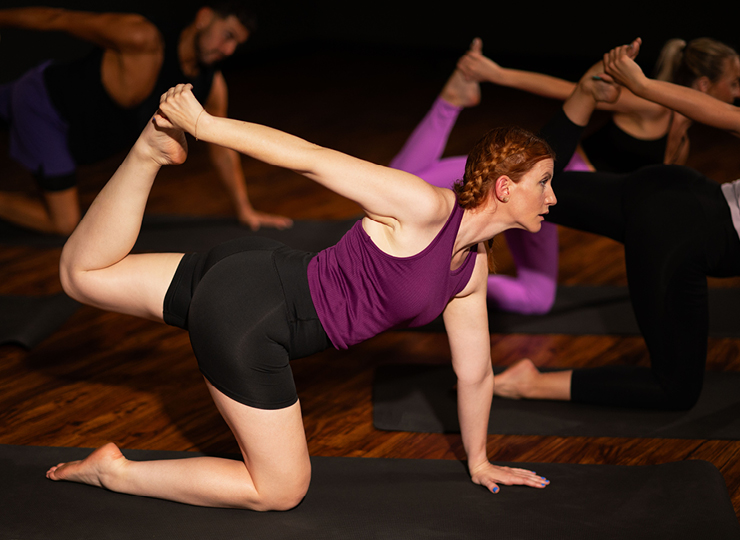
The sequences are often faster-paced and aim to build muscle tone, improve flexibility, and enhance endurance. This style of yoga is well-suited for those looking for a more athletic and rigorous workout.
Regardless of your style, numerous studies have shown that various forms of yoga can significantly reduce blood pressure and stress levels, build core strength, and help prevent common injuries by improving balance and flexibility.
These benefits make yoga a versatile practice that supports physical and mental well-being, whether seeking a tranquil experience or a more intensive workout.
Cardio
Among the most varied types of group fitness classes, group cardio workouts encompass different activities, from indoor cycling and dance-based classes to routines inspired by martial arts.
While the sheer number of options can feel overwhelming initially, it also provides a nearly limitless array of exciting and engaging ways to elevate your heart rate and improve cardiovascular health.
For example, in one session, you might pedal to the beat of hip-hop tracks in a high-energy Rhythm Cycling class, pushing your endurance and rhythm in a fun, fast-paced environment.
In another, you could follow a lively instructor dressed in neon spandex as they lead you through a nostalgic, 80s-themed workout in Retro-Robics, complete with dynamic dance moves and upbeat music.
No matter which type of class you choose, group cardio workouts offer a fantastic way to make exercise enjoyable while promoting a healthier, more active lifestyle.
These classes provide the perfect opportunity to explore different forms of movement, stay motivated, and connect with others, making your fitness journey effective and fun.
How Do I Find Group Fitness Classes Near Me?
If you’re ready to add group fitness classes to your personal fitness journey, you’re in luck: Crunch Fitness maintains one of the largest and most diverse lists of classes you’ll find anywhere in the fitness industry.
Even better, attending a class is as easy as heading over to our group fitness class list and choosing one that interests you. Then, simply show up ready to exercise, and our instructors will take it from there.
For current Peak Results members, unlimited access to all classes is included in your monthly fees; Peak members enjoy similar benefits, though they may have limited access to small-group training sessions. Members on our Base Plan do not currently have access to group classes but can upgrade for a small increase in their monthly plans and join our group classes immediately!
Join Us!
Crunch promotes a culture of positivity, inclusivity, and fun with no judgments by providing an environment for all individuals regardless of their health and fitness goals. Find a Crunch gym near you to try our free trial membership, or join Crunch now. We’re here for you – at the gym or at home. Access the best live & on-demand workouts anytime, anywhere with Crunch+. Ready to get sweaty? Try hundreds of workouts for free! Start your free trial now!











